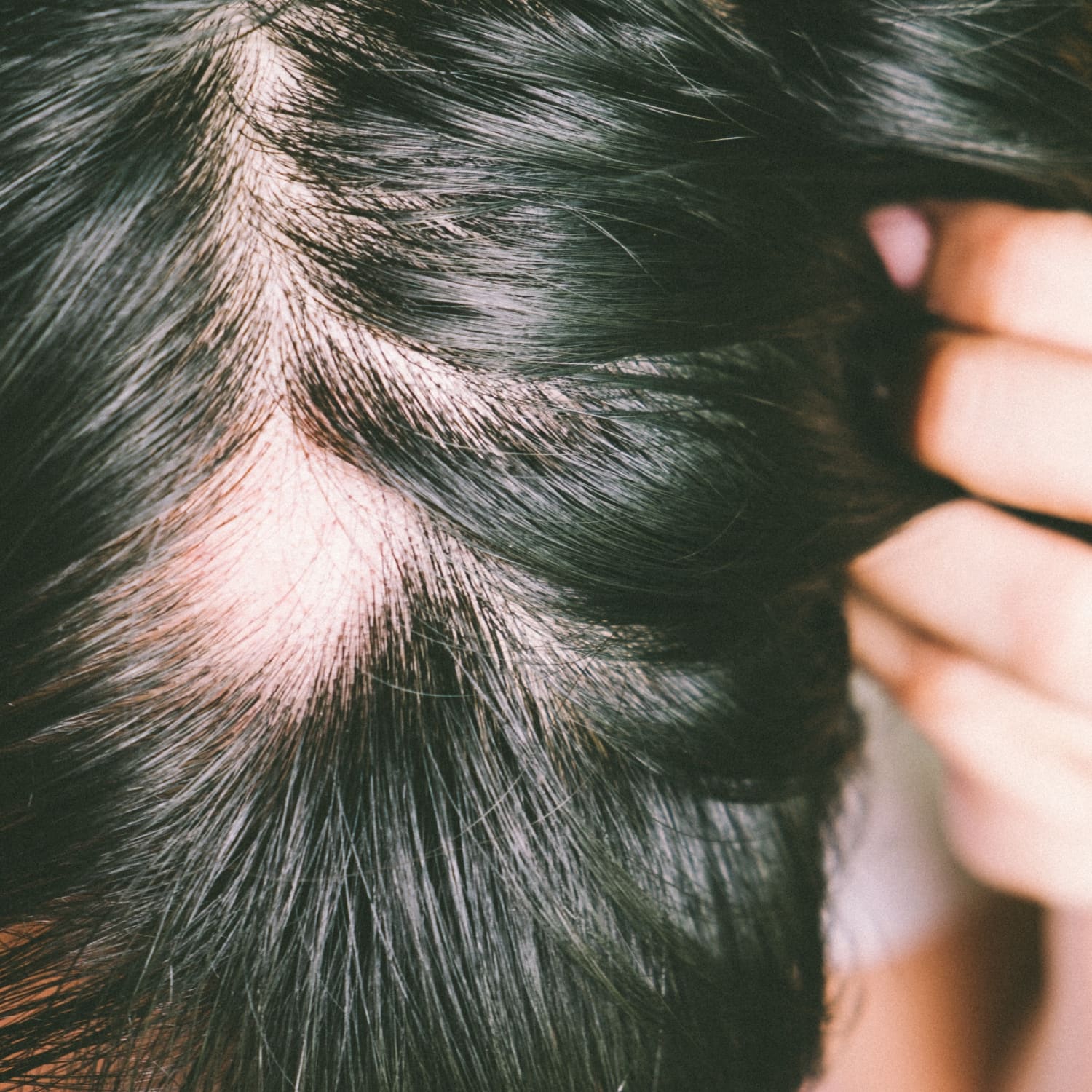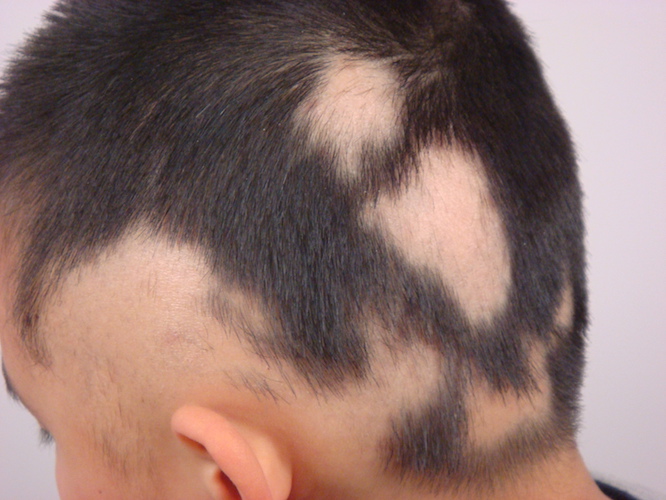5 Best Alopecia Treatments
Table Of Content

To get a closer look, your dermatologist may use a tool called a dermatoscope. This tool magnifies, giving your dermatologist a better view of what’s happening. You can search by location, condition, and procedure to find the dermatologist that’s right for you. Use these professionally produced online infographics, posters, and videos to help others find and prevent skin cancer.
First alopecia treatment recommended on the NHS - BBC.com
First alopecia treatment recommended on the NHS.
Posted: Thu, 22 Feb 2024 08:00:00 GMT [source]
SYSTEMIC THERAPY
Your healthcare provider can usually diagnose alopecia areata through a physical exam. They’ll ask about your medical history, including when you started noticing hair loss and whether you have a family history of alopecia areata or autoimmune disorders. Childhood and adolescence are such vulnerable times, and children and adolescents have so much to do and learn and become during these years.
When to see a doctor
Dietary changes may have a positive effect on alopecia areata. Oral immunosuppressants such as methotrexate and cyclosporine are another option you can try. If you need help finding a primary care doctor, then check out our FindCare tool here. If you’re currently losing hair, use a gentle baby shampoo to wash your hair.
Risk factors
The sooner these diseases are diagnosed, the easier they are to control. Once you develop this autoimmune condition, you may experience lifelong bouts of hair loss and other related symptoms. However, some people experience hair loss only once in their lifetime. Light therapy, or photochemotherapy, uses a light sensitizer or phototherapy of specific ultraviolet light wavelengths for their healing effects. Laser treatment delivers specific doses of radiation to encourage new hair growth. Alopecia areata is a condition that causes your hair to fall out in patches.
How do clinical features vary in differing types of skin?
These patches, sometimes called a kerion, can cause scarring as well. Adverse effects include distant hypertrichosis (5%) and irritation (7%). Adverse effects mostly include pain during injection and minimal transient atrophy (10%). The presence of atrophy should prompt a reduction in the triamcinolone acetonide concentration and avoidance of the atrophic site. Corticosteroid therapies can include intralesional injections or topical application. A side by side comparison of the same patient before and after treatment.
Brett King, MD, PhD: Baricitinib Impact on Regrowth of Scalp, Eyebrow, Eyelash Hair with Alopecia Areata - MD Magazine
Brett King, MD, PhD: Baricitinib Impact on Regrowth of Scalp, Eyebrow, Eyelash Hair with Alopecia Areata.
Posted: Sun, 10 Mar 2024 08:00:00 GMT [source]
It is shown to be very well tolerated with minimal side effects. Patients can experience reactions at the injection site, fatigue, headaches, and sinusitis. If you answered yes to any of these questions, your dermatologist may recommend a wig or concealer. You should only take biotin, iron, or zinc when your blood test shows that you have a deficiency. If your levels are normal, taking a supplement can be harmful. For example, if you take too much iron, you can develop iron poisoning.
The role of vitamins and minerals in hair health: Essential nutrients for strong and healthy hair
To prevent irritation and loss of more eyelashes, dermatologists recommend that you remove artificial eyelashes before going to bed. It’s important to know that no one treatment works for everyone — and treatment is not always recommended. You may also need a blood test to look for thyroid disease and check if you have healthy levels of iron and vitamins.
But there have been no reliably effective treatments for severe cases of alopecia areata until recently. Typically, the most common types of hair loss are treated with topical or oral medications, which will likely be the first course of treatment. Androgenic alopecia refers to hereditary hair loss, like male pattern baldness or female pattern baldness, and is also known as “pattern alopecia” because it can happen to both males and females.

Symptoms of alopecia areata typically start between ages 25 and 36 years. Hair loss can also be a side effect of some medications, especially chemotherapy medications to treat cancers. Some research connects excess intake of vitamin A or selenium with an increased risks for hair loss. Hair loss is a complicated topic and the role of nutrition in preventing or treating hair loss can be somewhat controversial.
Dr. King is at the forefront of treatment of alopecia areata, and he understands the profound impact that alopecia areata can have on patients and their families. He and his colleagues at Yale Medicine are researching alopecia areata to better understand the disease and its treatment. Clinical trials for another JAK inhibitor, deuruxolitinib, for alopecia areata treatment have also shown positive results. “Hopefully, in the next year people with severe alopecia areata will have yet another treatment option,” says Dr. King.
These include topical azelaic acid,[60] onion juice,[61] and topical 5-fluorouracil.[62] The efficacy and safety of these therapeutic agents are variable. It’s essential that you not become pregnant while taking spironolactone. To prevent pregnancy, your dermatologist will also prescribe a birth control pill if it’s possible for you to get pregnant. Most patients return once a month for 3 months and then once every 3 to 6 months. While you can buy a microneedling device without a prescription, it’s best to check with your dermatologist first. It’s important to understand that not everyone who used a laser saw regrowth.
It is possible that emotional stress or an illness can bring on alopecia areata in people who are at risk, but in most cases, there is no obvious trigger. Patients should be informed that there is no cure and response to treatments are variable. Improvement following numerous other less common and less studied treatments have been reported. There are no differences in clinical features of alopecia in patients with skin of colour. You're likely to first bring your concerns to the attention of your family doctor. He or she may refer you to a doctor who specializes in the treatment of skin problems (dermatologist).
Finally, keep in mind that the same healthy habits recommended for maintaining your physical health will also help your hair. Try to find ways to manage stress, and strive for a well-balanced diet that includes plenty of fruits and vegetables. It’s usually genetic, but it can also be triggered by diseases or disorders that attack the hair follicles. Alopecia areata can be a challenging condition to manage, but continued scientific breakthroughs in the area suggest that the range of treatments will only increase in the future. While corticosteroid injections are more effective, you may be able to use the medication as a topical ointment or take it orally as a pill. We also consulted medical studies and resources to corroborate information about each treatment.
Another approach is the topical application of an irritant such as squaric acid, which results in a rash similar to poison ivy. The resulting inflammation seems to subvert the immune system’s attack on the hair follicles. However, this treatment is often uncomfortable for the patient, causing redness and itchiness.
Healthcare professionals use tiny needles to inject the steroid into the bald area. You can rub medications into your scalp to help stimulate hair growth. A number of medications are available, both over the counter (OTC) and by prescription.
Comments
Post a Comment